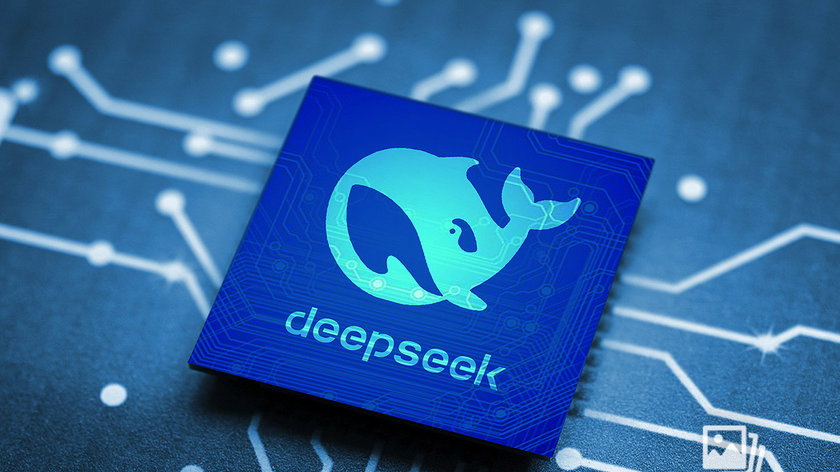🔐 Managing Secrets with .env in DeepSeek Projects: A Complete Guide to Secure AI Deployments
📘 Introduction
In modern AI development, especially when integrating cloud-based APIs like DeepSeek, securely managing sensitive data such as API keys, database URLs, and access tokens is not just a best practice — it’s essential. Exposing secrets can result in data breaches, unauthorized access, or even high financial costs if tokens are misused.
This article provides a comprehensive 4000-word guide to managing secrets with .env files in DeepSeek-powered projects, including examples, security practices, integration tips, and DevOps workflows.
✅ Table of Contents
What Are
.envFiles and Why Use ThemSample
.envfor a DeepSeek ProjectUsing
python-dotenvoros.environProtecting Secrets in Git and Docker
How to Structure Environment Variables
Best Practices for Secret Management
Using
.envin Docker & CI/CDGitHub Actions: Injecting Secrets Securely
Secure Vaults: Dotenv Alternatives (AWS, HashiCorp, GCP)
Threats and How to Avoid Secret Leakage
Tips for Team Collaboration
Final Thoughts
1. 🧠 What Are .env Files and Why Use Them?
A .env file (short for environment file) stores key-value pairs of environment variables outside of your main code. It allows you to:
Keep secrets out of your source code
Easily change environment-specific settings (dev/stage/prod)
Simplify deployment and configuration
Avoid hardcoding sensitive information
Example:
env DEEPSEEK_API_KEY=sk-abc123xyz456 PORT=8000 DEBUG=True MODEL_NAME=
2. 📦 Sample .env for a DeepSeek-Powered App
Here’s a full .env file example for a chatbot powered by DeepSeek:
env # DeepSeek Config DEEPSEEK_API_KEY=sk-abc123xyz456 DEEPSEEK_MODEL=deepseek-coder # App Config PORT=8000 DEBUG=True LANGUAGE=en # Optional Services REDIS_URL=redis://localhost:6379/0 POSTGRES_URL=postgresql://user:pass@localhost:5432/mydb
Never commit this file to Git! We'll cover protection strategies later.
3. 🧪 Using .env in Python
You can access .env variables using either:
Option 1: os.environ
python
import os
API_KEY = os.environ.get("DEEPSEEK_API_KEY")
MODEL = os.environ.get("DEEPSEEK_MODEL", "deepseek-chat")
Option 2: python-dotenv (for local dev)
Install it:
bash pip install python-dotenv
Load the .env file in main.py:
python
from dotenv import load_dotenvimport os
load_dotenv()
API_KEY = os.getenv("DEEPSEEK_API_KEY")
4. 🛑 Protecting Secrets in Git and Docker
Add .env to .gitignore
Create a .gitignore file (if it doesn’t exist):
bash .env.env.* secrets/
Tip: Even better, keep
.envin asecrets/folder excluded from version control.
Don’t Build Secrets into Docker Images
Avoid this (bad):
Dockerfile ENV DEEPSEEK_API_KEY=sk-abc123
Instead, use runtime injection:
bash docker run --env-file .env your-container-name
Or set variables individually:
bash docker run -e DEEPSEEK_API_KEY=sk-xxx your-image
5. 🧱 Structuring Environment Variables
Environment variables should be:
Short but descriptive
Grouped by function
Have defaults for non-sensitive values
Suggested Structure:
env # DeepSeek Settings DEEPSEEK_API_KEY= DEEPSEEK_MODEL=deepseek-chat # Flask or FastAPI DEBUG=False PORT=8000 SECRET_KEY= # Database DATABASE_URL= REDIS_URL=
6. ✅ Best Practices for Secret Management
| Best Practice | Why It Matters |
|---|---|
| Never commit secrets to Git | Prevent public exposure |
Use .env.example instead | Share expected variables without values |
| Limit scope and lifespan of keys | Rotate expired or unused keys |
| Use different keys per environment | Isolate dev from prod |
| Restrict secrets via firewalls or IPs | Prevent unauthorized access |
| Automate secret revocation if leaked | Respond faster to breaches |
7. 🐳 Using .env in Docker & Compose
Option A: Run with .env
bash docker run --env-file .env -p 8000:8000 my-deepseek-app
Option B: Docker Compose + .env
yaml version: "3"services: app: build: . ports: - "8000:8000" env_file: - .env
Compose automatically loads from .env at root.
8. 🤖 GitHub Actions & Secret Injection
Never store secrets in the code or .env. Use GitHub’s Secrets dashboard under your repo's Settings > Secrets.
Example workflow.yml:
yaml
env:
DEEPSEEK_API_KEY: ${{ secrets.DEEPSEEK_API_KEY }}
You can use it in scripts:
yaml
- name: Run DeepSeek bot
run: python main.py
env:
DEEPSEEK_API_KEY: ${{ secrets.DEEPSEEK_API_KEY }}
9. 🔐 Secret Managers as Alternatives
For production, consider vault solutions:
| Tool | Best For | Provider |
|---|---|---|
| AWS Secrets Manager | AWS-based infrastructure | Amazon |
| HashiCorp Vault | Enterprise multi-cloud | HashiCorp |
| Google Secret Manager | GCP projects | |
| Azure Key Vault | Microsoft apps | Microsoft |
Python libraries like boto3 or google-cloud-secret-manager support direct integration.
10. ⚠️ Common Threats and How to Prevent Them
| Threat | Prevention |
|---|---|
| Secrets pushed to Git | Use .gitignore, enforce pre-commit hooks |
.env in Docker images | Inject secrets at runtime |
| Sharing secrets via Slack/email | Use password managers or vault links |
| Long-lived tokens | Use short TTL + auto-rotate tools |
| Hardcoded secrets in source code | Refactor into env vars |
11. 🧑🤝🧑 Team Collaboration with Secrets
When working in teams:
Share
.env.examplewith all variables listedUse 1Password, Bitwarden, or vaults to share real
.envvaluesNever paste secrets into Slack or public Notion pages
Use
direnvor.envrcto manage local environments
12. 🧠 Final Thoughts
If you're building any application powered by DeepSeek — whether it's a chatbot, a LangChain agent, or a multimodal RAG tool — securing your credentials is non-negotiable. .env files are simple, effective, and ideal for most local or early-stage deployments.
But for production-grade apps, especially when scaling, combining .env with secret vaults, CI/CD injection, and access control will ensure your data and users remain safe.
📦 Bonus: Sample Files
.env.example
env # DeepSeek DEEPSEEK_API_KEY= DEEPSEEK_MODEL=deepseek-chat # App PORT=8000 DEBUG=True SECRET_KEY=
.gitignore
bash .env.env.* *.pyc __pycache__/
Python Snippet
python
from dotenv import load_dotenvimport os
load_dotenv()
api_key = os.getenv("DEEPSEEK_API_KEY")
❓Want a GitHub Template?
Would you like a preconfigured DeepSeek project that includes:
.env+.env.exampleSecure Docker deployment
GitHub Actions with secrets
LangChain integration
Streamlit frontend
Let me know, and I’ll generate one tailored to your project!









